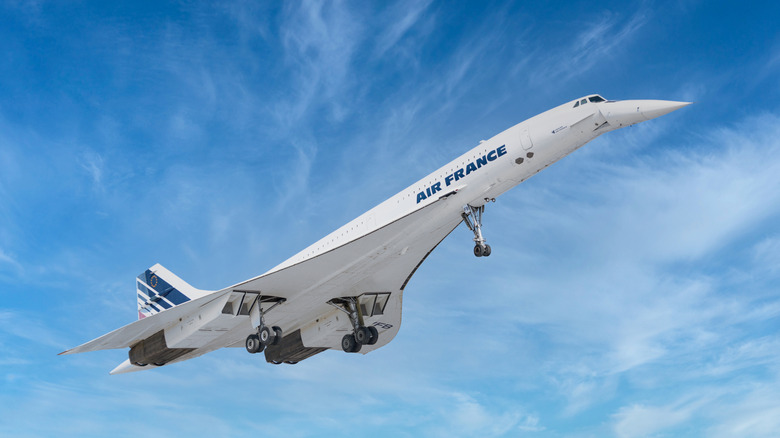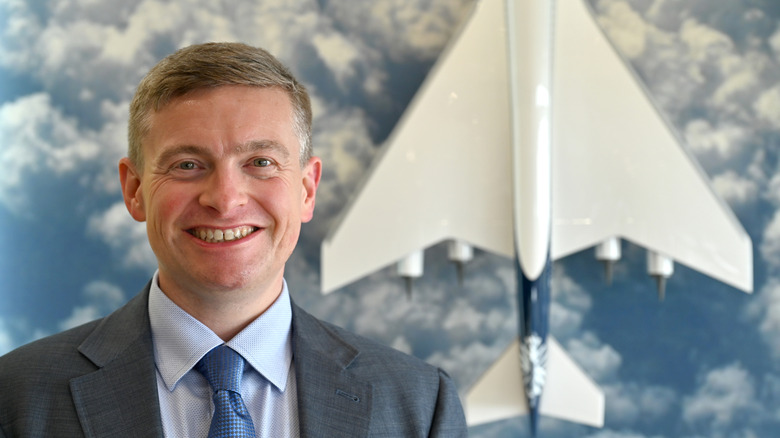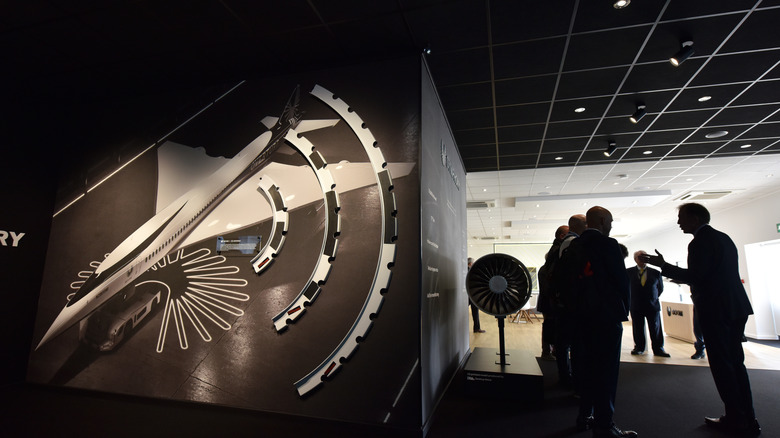What Happens When A Passenger Plane Reaches Supersonic Speeds?
When a passenger aircraft crosses Mach 1, it's moving faster than sound. That shift creates shock waves around the airframe. Drag increases sharply, engines must burn far more fuel, and the familiar boom on the ground becomes unavoidable. The Concorde faced this in the 1970s, and any modern supersonic jet see the same physics.
The design of the wings and fuselage must adjust to avoid instability and overheating at these speeds. Aerodynamic efficiency also drops, which is why most commercial planes cruise around Mach 0.8 instead of pushing further. There are many myths surrounding supersonic flight about what the pilots and passengers feel. In practice, passengers feel little difference — cabin pressure, comfort, and takeoff are the same — but outside, the aircraft is tearing through air in a way that demands more energy with every mile.
Today's prototypes, like Boom Supersonic's XB-1, have shown that the technology still works. During testing, it reached Mach 1.122 over California, proving small jets can break the barrier safely, but scaling that up for passenger service, as Boom plans with its 65-seat Overture, is where challenges multiply.
Fuel burn and climate impact
The unavoidable problem with supersonic travel is efficiency. To counteract drag, jets burn two to three times more fuel per passenger compared with today's subsonic flights. That means more carbon dioxide, nitrogen oxides, and black carbon are released, often in the stratosphere, where pollutants last longer and damage the ozone layer.
Boom claims Overture will run on 100% sustainable aviation fuel (SAF), but there are major limits. SAF supply is small, expensive, and mostly offsets only 50–70% of carbon emissions compared with fossil fuels. Even if every drop of SAF went to supersonic aircraft, it would leave conventional aviation competing for the same scarce resource, and because SAFs contain less sulfur, they might even warm the atmosphere more when burned at 60,000 feet, where the Concorde once flew.
Supersonic jets could avoid contrail formation because of drier stratospheric air, which may help slightly, but the net impact still skews negative. With aviation already under pressure to cut emissions, introducing planes that use more energy per seat runs against global targets for net zero by 2050.
Why supersonic still struggles to take off
Technical hurdles are matched by regulatory and economic ones. Supersonic flight over land is banned in most regions due to noise, and while low-boom research is underway, it's unproven. Without overland routes, airlines are limited to transoceanic flights, just like Concorde, which has long been discontinued. High operating costs compound the issue: Overture is expected to burn two to three times more fuel per passenger than a subsonic business-class seat, and far more than economy. That alone narrows its potential market.
Other groups, from NASA and Lockheed Martin to Spike Aerospace, are developing alternatives, but none have yet solved the physics of drag. Even if future engines adapt to cleaner fuels like e-kerosene or hydrogen, supersonic travel won't match the efficiency of today's long-haul jets.
That doesn't mean research is wasted. Work on propulsion, fuel, and noise reduction may filter down into regular subsonic aviation, improving efficiency across the industry. For now, though, supersonic passenger planes remain an impressive demonstration of engineering with a heavy tradeoff. They can cut a New York–London flight to three and a half hours, but at the cost of burning far more fuel at a time when aviation is under growing pressure to pollute less.


